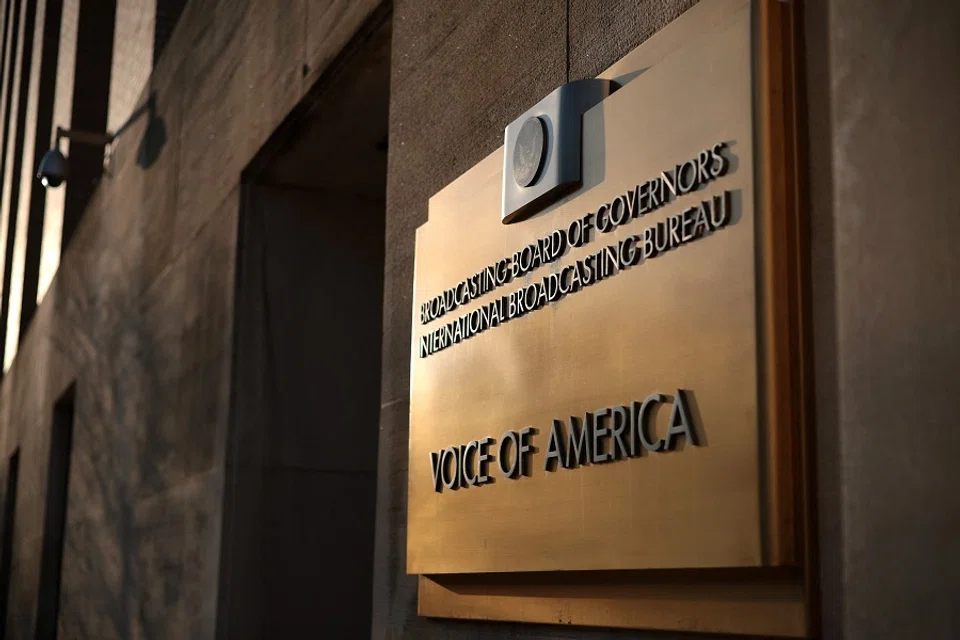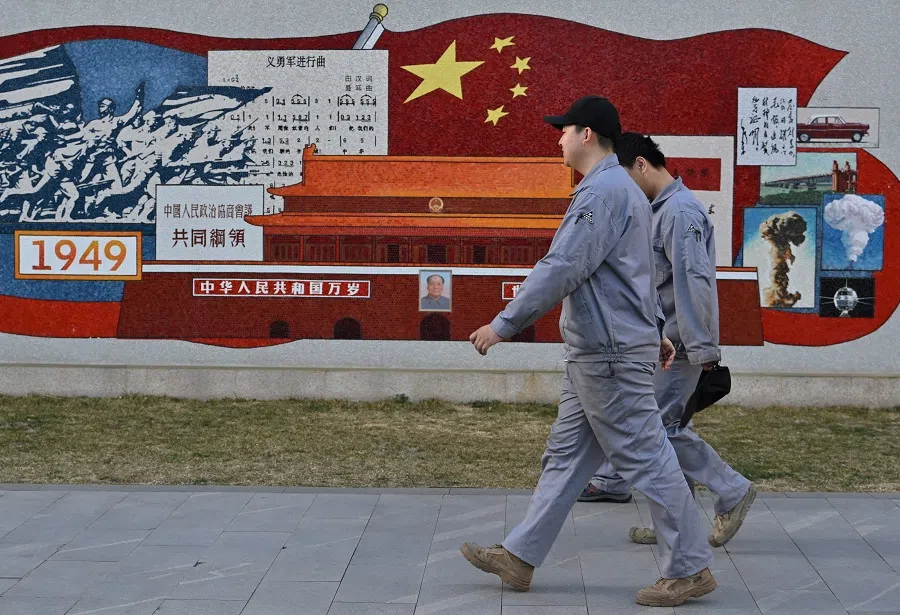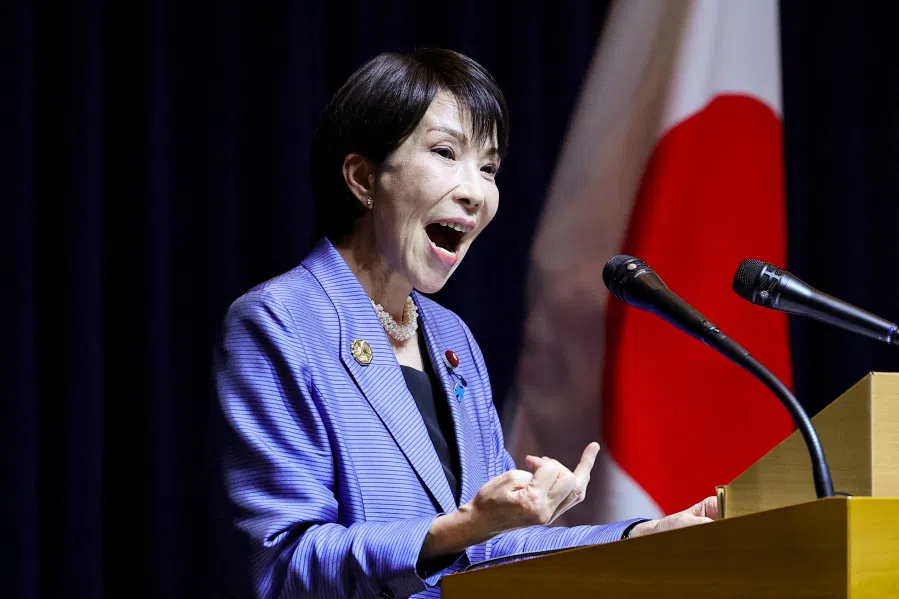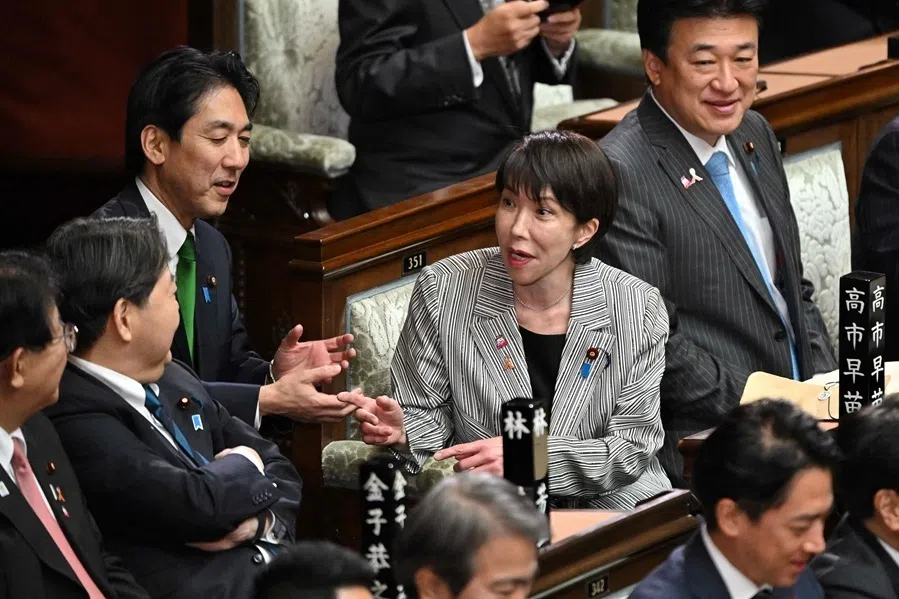From VOA to X: How Trump and Musk redefined US soft power
International American broadcasting platforms like Voice of America, which were traditional conduits for overseas publicity, were recently shut down after the Trump administration cut their funding. Lianhe Zaobao correspondent Sim Tze Wei discusses the reactions to — and ramifications of — this shutdown.

The Donald Trump administration not only dismantled the international order that had been in place for over 80 years since World War II, it also ended America’s official external propaganda model that had existed for just as long.
Elon Musk, who helms the US Department of Government Efficiency, openly criticised international American broadcasting networks such as Voice of America (VOA) and Radio Free Europe/Radio Liberty as “radical left crazy people talking to themselves while torching US$1 billion per year of US taxpayers’ money”. On 14 March, Trump signed an executive order significantly cutting the budget of the United States Agency for Global Media (USAGM), leading to the defunding of several media outlets under its umbrella, such as VOA, Radio Free Asia (RFA) and Radio Free Europe.
VOA, which began broadcasting in 1942, ceased updates from 15 March, with approximately 1,300 employees forcibly being placed on leave. RFA, established in 1996, also had its funds frozen.
VOA and RFA shutdown celebrated by the Chinese government
In China, where VOA and RFA were viewed as “anti-China”, the silencing of these outlets was widely lauded by the government, state media and “Big Vs” (大V, or verified internet personalities).
A Global Times editorial mocked VOA as being “discarded by its own government like a dirty rag”, and accused it of having “an appalling track record”. The article also asserted that nearly every “malicious falsehood” about China regarding issues in Xinjiang, the South China Sea, Taiwan and Hong Kong had “VOA’s fingerprints all over it”. Hu Xijin, former editor-in-chief of Global Times, took to Weibo and commented that it was “extremely satisfying”.
For some liberals, the Trump administration’s self-silencing was akin to giving China a huge gift and helping to “make China great again”.

In response to the media during a regular press conference, Chinese Foreign Ministry spokesperson Mao Ning declined to comment on US adjustment of its domestic policies, but added that for the certain US media outlets mentioned, “their blemished track record on China coverage is hardly a secret”.
International radio stations a legacy of the Cold War
Some middle-aged and older Chinese netizens expressed mixed feelings. During the Cold War, they listened to “enemy stations” including VOA on the sly, stealing a glimpse of the “free world” outside through these platforms. After China’s reform and opening up, these “enemy stations” became platforms for learning English. For some liberals, the Trump administration’s self-silencing was akin to giving China a huge gift and helping to “make China great again”.
From the 1940s and 1950s onwards, Western countries established tens of radio stations, transmitters and relay stations in the regions around socialist countries. Besides VOA, there were the UK’s BBC, Germany’s Deutsche Welle (DW), and Radio Free Europe — all products of the Cold War and psychological warfare, intended to transcend national borders and utilise cultural soft power to sway audiences on the other side of the Iron Curtain to accept American and Western values.
This smokeless radio wave war lasted for about half a century. Due to similar official budget cuts, however, the BBC and VOA ended their shortwave broadcasts to China in 2011 and 2012, respectively. Broadly speaking, these “enemy stations” outside China went silent over a decade ago, though their text and digital platforms remained active until Trump’s rise to power brought about an unprecedented shift not seen in nearly a century.
China and Russia step in to fill the propaganda vacuum left by the US
The Trump administration’s massive federal budget cuts initiated the largest and fastest international strategic contraction since globalisation began. As a result, external propaganda and publicity platforms were scaled back, undoubtedly creating opportunities for China and Russia to expand their own external propaganda influence.

DW director general Peter Limbourg thinks that the Trump administration’s decision creates a huge opening for disinformation and propaganda machines. He said, “Based on the previous experiences of our colleagues in Europe, as long as there is a vacuum, the Chinese and Russians will intervene, and that is regrettable.”
On the other hand, since the Chinese Communist Party (CCP)’s 18th Party Congress, Chinese leaders have reiterated the importance of “telling the China story well”, and even striving to create a “trustworthy, lovable and respectable” image of the country.
In 2018, the CCP Central Committee issued a plan to deepen the reform of party and state institutions, stipulating the disbandment of China Central Television (China Global Television Network), China National Radio and China Radio International. While their original call signs will be retained domestically, the uniform call sign of “Voice of China” will be used externally. This “Voice of China” seems to be a direct challenge to VOA and DW.
However, the overt external propaganda objectives and clumsy narrative approach instead creates a strong impression of “united front” tactics and propaganda. As a result, the effective communication of narratives — even compelling ones — are hindered.
... TikTok users are less likely to see video content critical of China. TikTok also offers a much higher proportion of pro-China or apolitical videos than YouTube and Instagram. — a study by Network Contagion Research Institute, Rutgers University
Could social media play an essential role in disseminating propaganda?
In the new media era, Chinese apps such as Douyin and RedNote have unexpectedly emerged to become powerful vehicles for external propaganda. No amount of meetings, posts, or storytelling can match the effectiveness of a simple video or chat by users on TikTok and RedNote. Countless individuals have gathered on these platforms, maximising the anti-authoritarian and grassroots nature of new media culture.

The inherent algorithmic structures of these new media platforms further enhance the effectiveness of Chinese apps as tools for external propaganda. A study published last August by Rutgers University’s Network Contagion Research Institute analysed TikTok’s algorithm using several sensitive keywords, such as Xinjiang, Uighur, Tibet and Tiananmen, and found that TikTok users are less likely to see video content critical of China. TikTok also offers a much higher proportion of pro-China or apolitical videos than YouTube and Instagram.
It is no wonder that some netizens lamented the fact that while TikTok — the “brainwashing tool” — remains active in the US, VOA and Radio Free Asia have been silenced by the US government.
... there is no end to soft power struggles, cognitive warfare and psychological battles between countries; from shortwave radio and the internet to mobile apps, the channel by which such competition occurs evolves.
It remains to be seen whether the Trump administration has completely ceded the battleground of soft power and ideological influence. It is also possible that it will reappear in a more advanced form — one more suited to how modern audiences consume information. After all, there is no end to soft power struggles, cognitive warfare and psychological battles between countries; from shortwave radio and the internet to mobile apps, the channel by which such competition occurs evolves.
Alternatively, prominent figures like Trump and Musk, who view themselves as distinct from Chinese leaders, have their own social media accounts. Netizens around the globe closely follow their X and Truth Social accounts, far exceeding the audience of any “Voice of [Country]” platform. The silencing of these platforms therefore seems inconsequential.
In the rapidly changing media landscape of the 21st century, traditional media outlets must move with the times and continue to fulfil their historical responsibilities. On the other hand, niche and engaging influencer-style outreach methods may be even more persuasive and impactful. Both approaches are indispensable.
This article was first published in Lianhe Zaobao as “中国的境外“敌台”消音了”.





